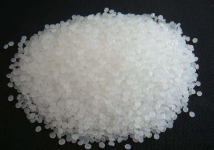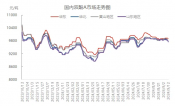read: 979 time:2025-07-01 11:55:20 from:化易天下
In the field of chemistry, particularly in organic chemistry, understanding the stability of various ions and molecules is crucial. One common topic of interest is why phenoxide ion is more stable than phenol. This difference in stability plays a significant role in reactions involving phenols, influencing everything from acidity to reactivity. In this article, we will explore the factors that contribute to the increased stability of the phenoxide ion compared to phenol.
One of the primary reasons why phenoxide ion is more stable than phenol is due to resonance stabilization. When phenol loses a proton (H⁺) to form the phenoxide ion, the negative charge on the oxygen atom can be delocalized into the aromatic ring. This delocalization occurs through the overlapping of the oxygen’s p orbital with the π system of the benzene ring, resulting in multiple resonance structures. These structures spread the negative charge across the oxygen and the ortho and para positions of the benzene ring, reducing the electron density at any one point. As a result, the phenoxide ion is stabilized by resonance, making it more stable than its neutral phenol counterpart, where such extensive resonance delocalization is not possible.
Another factor contributing to the greater stability of the phenoxide ion is the inductive effect. In phenol, the -OH group is attached to the benzene ring. The oxygen atom, being more electronegative than carbon, exerts a withdrawing inductive effect, pulling electron density away from the benzene ring. This makes the oxygen atom slightly positive and destabilizes the molecule by making the hydroxyl group less willing to release a proton. In contrast, once the proton is lost and the phenoxide ion forms, the oxygen now bears a negative charge. The inductive effect still occurs, but it now stabilizes the negative charge by spreading it across the benzene ring, contributing to the overall stability of the phenoxide ion.
A detailed look at the electron density distribution between phenol and phenoxide ion also explains why phenoxide ion is more stable than phenol. In phenol, the electron density is concentrated on the oxygen atom, which creates a partial negative charge, leading to instability as there is no easy way to relieve this electron density. However, in the phenoxide ion, the electron density is not confined to the oxygen atom but is distributed across the benzene ring due to resonance. This even distribution of electron density reduces the overall energy of the molecule, thus increasing the stability of the phenoxide ion.
Lastly, solvent interactions play a role in the stability difference. Phenoxide ions, being charged species, interact more favorably with polar solvents compared to neutral phenol molecules. These solvation effects further stabilize the phenoxide ion in solution, as the solvent molecules help to stabilize the negative charge. This interaction is another reason why phenoxide ion is more stable than phenol in a solution phase.
Understanding why phenoxide ion is more stable than phenol requires a comprehensive look at resonance effects, inductive effects, electron density distribution, and solvent interactions. The resonance stabilization and the effective delocalization of the negative charge play the most significant roles in enhancing the stability of the phenoxide ion. This increased stability is crucial in many chemical reactions, particularly those involving phenols, and is a fundamental concept in organic chemistry.

Jincheng Petrochemical's 300000 ton polypropylene plant successfully trial production, 2024 polypropylene market analysis

The ABS market remains sluggish, what is the future direction?

Market differentiation of bisphenol A intensifies: prices rise in East China, while prices generally decline in other regions

The production method and process flow of silicone acrylic lotion, and what are the common raw materials